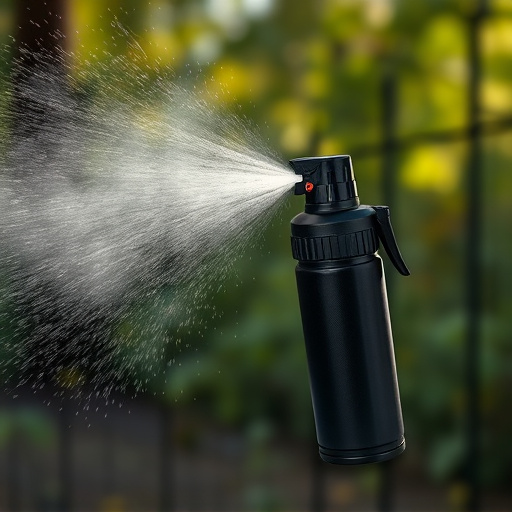OC spray, a law enforcement tool using capsaicin (chili pepper derivative), has concentration levels measured in parts per million (ppm). Higher ppm values enhance its potency, impacting range and duration of incapacitation. While effective for crowd control, it poses risks like respiratory distress, blindness, and death. Safe deployment requires officer training, protective gear, maintenance, and understanding specific capsaicin concentration levels (1%-2%).
“Discover the power of OC spray, a versatile and potent compound derived from capsaicin. This article demystifies the chemical’s composition, focusing on how its concentration levels determine effectiveness. From understanding the science behind ‘OC Spray’ to grasping why ‘concentration matters,’ you’ll gain insights into managing risks associated with pepper spray use. Essential reading for anyone seeking knowledge on this widely used law enforcement tool.”
- OC Spray: Understanding Capsaicin Composition
- Concentration Matters: Levels Explained
- Safety and Use: Managing Pepper Spray Risks
OC Spray: Understanding Capsaicin Composition
OC spray, a common less-lethal weapon employed by law enforcement, is known for its ability to incapacitate individuals temporarily through the use of capsaicin, the active ingredient derived from chili peppers. The effectiveness of OC spray lies in its capsaicin composition and concentration levels, which play a pivotal role in neutralizing targets without causing permanent harm.
These concentration levels are typically measured in parts per million (ppm). Commercially available OC sprays may contain capsaicin concentrations ranging from 1% to 20%, with higher concentrations offering more potent effects. The specific composition and concentration determine the spray’s impact, its range, and the duration of incapacitation it provides, making it a crucial component in law enforcement tactics for crowd control and suspect restraint.
Concentration Matters: Levels Explained
The effectiveness of police-grade inflammatory pepper spray, often referred to as OC spray or capsaicin spray, largely depends on its capsicum concentration levels. These concentrations are measured in parts per million (ppm) and determine the potency and impact of the spray. Lower concentrations may cause minor irritation while higher levels can induce significant distress, making it an effective crowd control tool. Law enforcement agencies carefully consider these OC spray capsaicin concentration levels to balance safety and utility during operations.
Choosing the appropriate concentration level involves a delicate balance. Too low, and the spray might not achieve its intended effect; too high, and it could lead to excessive reactions or even harm. Therefore, understanding the specific needs of each deployment scenario is crucial for selecting OC spray with the right capsicum concentration levels to ensure both effectiveness and safety.
Safety and Use: Managing Pepper Spray Risks
Pepper spray, primarily composed of capsaicin, is a powerful tool used by law enforcement to control and subdue individuals in various situations. However, its use comes with significant risks that must be managed diligently for the safety of both officers and suspects. The OC spray, a common term for oleoresin capsicum (OC) spray, has varying capsaicin concentration levels, typically ranging from 1% to 2%. While effective, these high concentrations can lead to severe reactions, including respiratory distress, blindness, and even death in certain cases.
To mitigate these risks, police departments must ensure proper training for officers on the safe handling and deployment of pepper spray. This includes understanding the spray’s range, wind dynamics, and de-escalation techniques. Regular maintenance and inspection of OC spray devices are crucial to prevent malfunctions. Additionally, providing protective gear, such as eye protection and respirators, can offer some safeguard against accidental exposure.
OC spray, with its active ingredient capsaicin, is a powerful tool for law enforcement. Understanding the composition and concentration levels of capsaicin is crucial for effective and safe deployment. By knowing how capsaicin interacts at different concentrations, officers can better manage risks and ensure the responsible use of this potent compound. This knowledge is vital in maintaining public safety and minimizing the potential harms associated with pepper spray.
